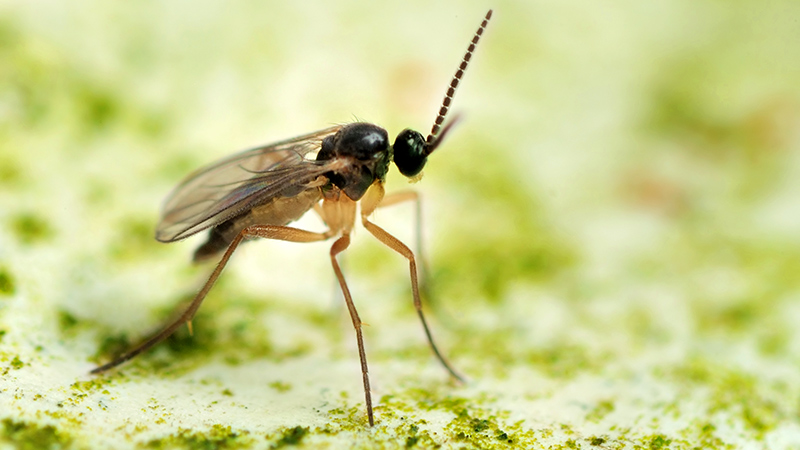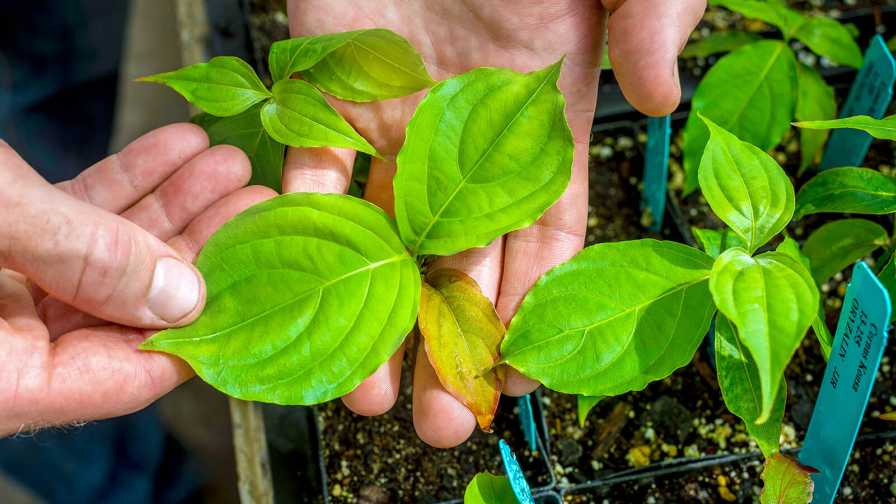Consumer Perceptions Of Sustainably Produced Poinsettias

Greenhouse growers across the United States continuously hear the word “sustainability” and often speculate whether this is another marketing program or a consumer-driven initiative that must be put into practice for their continued economic success in a very competitive environment. Most growers, however, have not heard of Lifestyles of Health and Sustainability (LOHAS). Have you?
This is an emerging market segment that is focused on health and fitness, the environment, personal development, sustainable living and social justice. The LOHAS market represents 41 million people in the United States who spend $209 billion annually on socially and environmentally responsible products. If this segment of the population is purchasing environmentally friendly products, are they interested in locally, organically or sustainably produced poinsettias?
crops as locally grown.
The Research
Previous Purdue research has shown 96 percent of greenhouse growers had heard of sustainable floriculture and the majority viewed sustainable practices as “very important” to the environment (OFA bulletin, July 2009).
The objective of this study was to determine consumer knowledge of the term “sustainability” and how it relates to floriculture crops such as poinsettia. We were also interested in identifying factors affecting consumer willingness to pay a premium price for sustainably produced poinsettias.
Last December, the public was invited to attend the 2008 National Poinsettia Cultivar Trial Consumer Open House at Purdue University in West Lafayette, Ind. The National Poinsettia Trials have been held at the University of Florida, North Carolina State University and Purdue University for the past two decades.
This, however, was the first time the consumer event was held on the Purdue campus. Individuals attending the event were asked to participate in an anonymous short survey intended to help determine consumer interest in purchasing environmentally friendly plants.
The average age group for consumers in this study was between 20 and 30 years old (29 percent). The sample was predominantly female (57 percent), college graduates (25 percent) and Caucasian Americans (81 percent).tia options because of personal monetary concerns and the current economic downturn. However, this percentage is consistent with past research from a non-floriculture study that shows consumers were willing to pay up to 20 percent for environmentally friendly products. Given a crop with such low profitability, marketing the sustainable plant attributes may be one low-cost way to stimulate sales if not modestly increase profits.
University in an energy-efficient greenhouse in 6-inch compostable rice
hull Circle of Life pots (Ball Horticulture, West Chicago, Ill.) filled with
a commercial soilless medium composed of sphagnum peat and rice
hulls (Fafard 1PRH, Agawam, Mass.). The crop was fertigated as
necessary with a waste-derived fertilizer
(Daniel’s 10-4-3 Professional; DP Foods, LLC, Sherman, Texas)
and reduced chemical inputs.
Consumers were also asked if they would be willing to pay more for the sustainably produced poinsettia plants than the conventionally produced poinsettia plants on display at the open house (Figure 2). A point-of-purchase poster was placed next to these plants which indicated the plants were “environmentally friendly” because they were grown in compostable pots, with sustainable fertilizers, alternative media components and in energy-efficient greenhouses.
The top four reasons why respondents were willing to pay more for the sustainably produced poinsettias were (1) they were grown in an energy-efficient greenhouse, (2) grown in compostable pots, (3) grown with reduced pesticides and (4) of high quality.
From the preliminary results of our survey, we found consumers in Indiana felt the current “green, sustainable and earth-friendly” movement is not just a fad, but will actually help the environment. To a commercial greenhouse operation, sustainably produced flowers can be a new niche or specialty crop market that may lead to increased profits and thus lead to economic and environmental sustainability. Growers should consider adding one or two sustainable production attributes to their poinsettia promotions such as the use of alternative container materials, local production or the use of reduced pesticides to displays, advertisements and other communication materials. Providing this potentially value-adding information to consumers at little or no additional cost should be considered when marketing your poinsettias crop.
Defining Sustainability
Of the 112 respondents, 81 percent indicated they had heard of the term “sustainability.” Although a majority had heard the term, we received 23 different definitions for sustainability. Still, there was a consensus on a few things.
One group of consumers believes sustainability means environmentally responsible and a concern about the earth and its resources. To others, it’s a term that describes a profitable business that produces high-quality products using environmentally friendly practices. Yet, other consumers felt sustainability referred to a product or plant that can survive without additional resources.
| Table 1. Survey participants were asked how interested they would be in purchasing the following poinsettia types. | |
| Poinsettia Type | Likert Scale Rating |
| Conventionally produced poinsettia (with chemical inputs) | 3.68 |
| Sustainably produced poinsettia (with reduced chemical inputs) | 5.09 |
|
Organically produced poinsettia (without chemical inputs) |
5.16 |
| Locally produced poinsettia | 5.83 |
| Poinsettia grown with organic fertilizers | 5.12 |
| Poinsettia grown in energy-efficient greenhouses | 5.64 |
| Poinsettia grown in biodegradable or compostable pot | 5.79 |
Most individuals indicated the best reason to purchase an environmentally friendly or sustainably produced poinsettia was that it would make them feel better about reducing their environmental footprint. Secondly, it would reduce exposure to chemicals in their homes.
Are Consumers Interested?
Using a Likert scale ranging from 1 to 7, (1 being lowest interest and 7 being highest) consumers were asked to rate how interested they would be in purchasing locally, conventionally, sustainably or organically produced poinsettias (Table 1). They were also asked to rate how likely they would be to purchase a poinsettia if it was grown with organic fertilizers, in an energy-efficient greenhouse or in biodegradable or compostable pots.
On average, our participants said they would be least likely to purchase a poinsettia conventionally produced with chemical inputs (3.68). Interestingly, locally produced poinsettias received the highest rating of 5.83. These findings are similar to what we often see with other agricultural products. Consumers are more interested in locally grown.
Yet, few commercial greenhouses market this attribute (Figure 1). The majority of the other plant purchase options were rated above 5 on the Likert scale, meaning consumers also have a high interest in purchasing these types of plants.
| Table 2. Greatest price increase (if any) that consumers would be willing to pay for the listed types of poinsettia. | ||||
|
Would not buy |
Would pay the same |
Up to 15% more |
Up to 30% to 100% more |
|
|
Ordinary or conventionally produced |
X | |||
| Organically produced | X | |||
| Produced with organic fertilizer |
X | |||
| Grown in biodegradable or compostable pots |
X | |||
| Grown without chemical inputs |
X | |||
| Grown locally | X | |||
| Grown in an energy-efficient greenhouse | X | |||
We used a 0 (would not buy) to 8 (would pay up to 100 percent more) Likert scale to determine the greatest price increase (if any) consumers said they would be willing to pay for the listed types of poinsettias in table 2. An “X” represents the average response of the consumers (Table 2). Even though there were a few individuals who were willing to pay much more for each of the plant types in our survey, on average the respondents in this survey were not willing to pay more than 15 percent above the current price for any of the poinsettia options. Many consumers stated they were not willing to pay more for the environmentally friendly poinsettia options because of personal monetary concerns and the current economic downturn. However, this percentage is consistent with past research from a non-floriculture study that shows consumers were willing to pay up to 20 percent for environmentally friendly products. Given a crop with such low profitability, marketing the sustainable plant attributes may be one low-cost way to stimulate sales if not modestly increase profits.
Consumers were also asked if they would be willing to pay more for the sustainably produced poinsettia plants than the conventionally produced poinsettia plants on display at the open house (Figure 2). A point-of-purchase poster was placed next to these plants which indicated the plants were “environmentally friendly” because they were grown in compostable pots, with sustainable fertilizers, alternative media components and in energy-efficient greenhouses.
The top four reasons why respondents were willing to pay more for the sustainably produced poinsettias were (1) they were grown in an energy-efficient greenhouse, (2) grown in compostable pots, (3) grown with reduced pesticides and (4) of high quality.
From the preliminary results of our survey, we found consumers in Indiana felt the current “green, sustainable and earth-friendly” movement is not just a fad, but will actually help the environment. To a commercial greenhouse operation, sustainably produced flowers can be a new niche or specialty crop market that may lead to increased profits and thus lead to economic and environmental sustainability. Growers should consider adding one or two sustainable production attributes to their poinsettia promotions such as the use of alternative container materials, local production or the use of reduced pesticides to displays, advertisements and other communication materials. Providing this potentially value-adding information to consumers at little or no additional cost should be considered when marketing your poinsettias crop.










